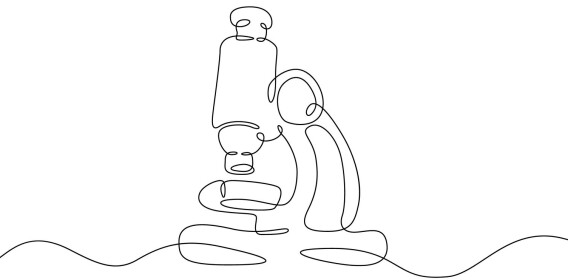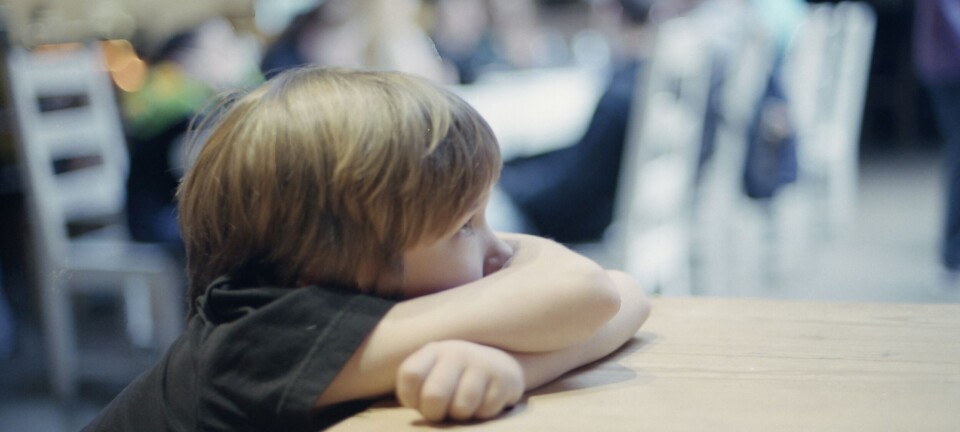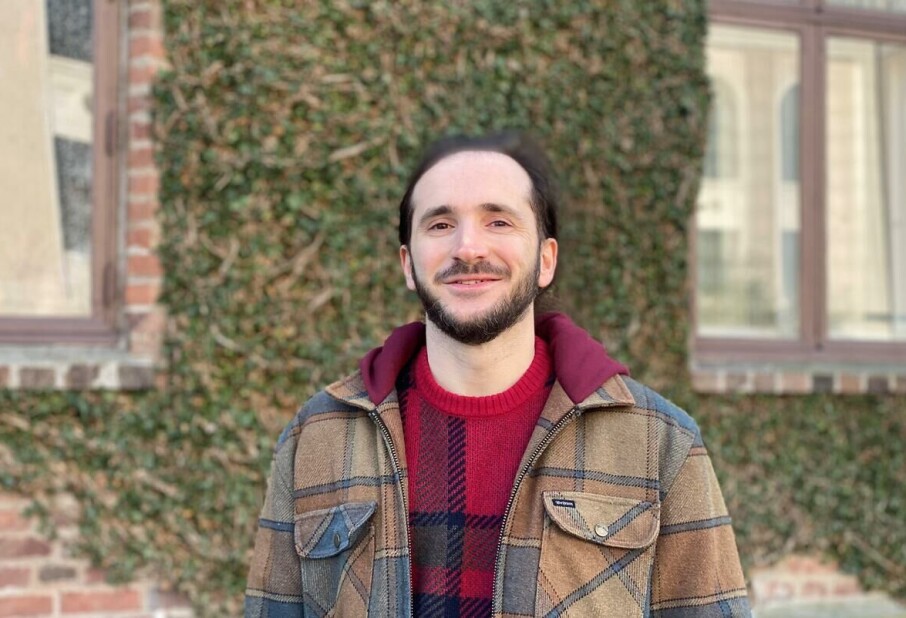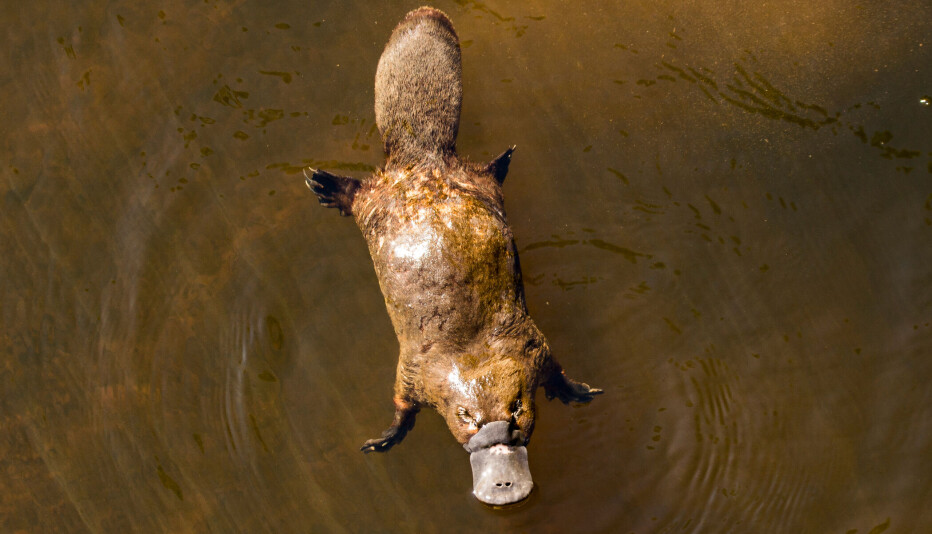"I make beads like the Vikings did – just with modern tools"
Lise Nilsen recreates bead necklaces from the Viking Age.

In a tent outside the Nøstetangen Glass Museum in Hokksund, Eastern Norway, Lise Nilsen carefully arranges her handmade bead necklaces on a table. She is taking part in the opening of a new exhibition about archaeological finds from the Viking Age.
Her contribution is a replica of a necklace found in a bog in 1834.
On the Hoen Farm, a tenant farmer discovered one of the greatest treasures from the Viking Age. Among the gold and silver in the Hoen Hoard, there were also 170 beads.
It is these beads that Lise Nilsen has assembled into a large necklace.
"It's a very unique and rare collection of beads, assembled over more than a hundred years and sourced from around the world," says Hanne Lovise Aannestad.
She is an archaeologist and collections manager at the Museum of Cultural History in Oslo.

Glass, gold, amber, and gemstones
The beads are crafted from a wide variety of materials. There are glass beads in all kinds of colours and shapes. There are also beads made of gold, amber, and gemstones such as rock crystal, agate, and carnelian.
Aannestad examines a photo of the necklace Nilsen has recreated.
"It's really beautiful. Truly impressive," says the archaeologist.
Nilsen has replicated both the shapes and colours of each bead from the original Hoen Hoard.
"I make the beads the same way the Vikings did, but with slightly more modern tools," says Nilsen.
She uses a gas flame, while the Vikings used open fire or clay ovens.
Melted glass into beads
Glass is made from sand, ash, and lime. Whether the Vikings produced their own glass from scratch remains uncertain. While the technology existed in Europe, it’s unclear if it reached Norway.
What is certain, though, is that the Vikings melted down glass they obtained and made beads from it.
The molten glass was wound around rods. Today, Nilsen uses smooth, straight steel rods, while the Vikings used small, hammered, angular ones.
"That's why Viking beads often have crooked or oddly shaped holes. They're hard to replicate," says Nilsen.

From Norway, Europe, and India
Bead production in Norway was quite modest, according to Hanne Lovise Aannestad. Traces of bead-making have been found in Kaupang, Eastern Norway.
"They made farily simple, single-coloured glass beads and polished beads from rock crystal," she says.

There are many such Norwegian, Swedish, or Danish beads in the Hoen Hoard.
Other beads come from elsewhere in Europe, including England and the Baltic region.
And some beads have travelled much farther.
"Beads arrived in Norway through Ukraine and Russia via trade routes from Asia – such as carnelian beads from India and the extremely rare purple beads, whcih may have been produced in China or Persia," says Aannestad.

Beads are more challenging than gold and silver
Beads from the Viking Age have received less attention than gold and silver jewellery.
Aannestad believes that is because it's so difficult to determine the origin of the beads.
Some were bought, gifted, or stolen during travels abroad. Others arrived through trade. Some beads were made in Norway using imported glass rods or by remelting foreign glass. There are also locally made imitations of foreign designs.
"This makes bead finds especially complex. Each one has to be analysed to determine the origin of the glass or stone – and where the bead was actually crafted," explains Aannestad.
Today, researchers use sophisticated techniques to identify these origins.
"But glass is still tricky. If beads were made by combining glass from two different sources, the analysis results can become very confusing," she says.
There may also be another reason why beads were overlooked.
"Archaeology was dominated by male professors until the 1950s. They were probably more interested in dating and identifying swords and such," she says.

What did the jewellery look like?
Beads have been found in many Viking Age graves. When archaeologists uncover an undisturbed burial, it’s easier to understand how the jewellery was originally arranged. The body is long gone, but the beads often remain in roughly the same order.
With hoards – treasures buried to hide or offer to the gods – it's more complicated. The thread that once held the jewellery together has long since decayed, leaving the beads scattered in piles.

The Hoen Hoard is one such find. It contains only women's jewellery – large gold rings, unique brooches and pendants, and, notably, beads.
"If all the beads from Hoen were strung together, the necklace would measure about 75 centimetres," says Aannestad. When all the amulets, pendants, and coin charms found with them are added, the necklace would be close to two metres long.
But exactly how the woman from Hoen wore this jewellery remains a mystery. It is unclear whether the beads were worn as one long necklace or split across several pieces.
Most viewed
Grave finds offer some clues: In many cases, bead necklaces hung in one or more rows from two large brooches fastened at the front of a dress. In other cases, they were looped several times around the neck. Burials from Birka in Sweden suggest that both styles were common.
A jumble of colours and reuse
Today, the jewellery appears as a lively mix of colours and materials.
"There’s no indication that the goal was a uniform look. In fact, the variety seems to have been intentional," says Aannestad.
Vikings often decorated their bead necklaces with coins, gold jewellery, rings with beads, and silver plates.
Some of the pendants in the Hoen Hoard were repurposed – literally cut out of something else.
Other items were more elaborate.
Two gold ornaments with red carnelian stones came from the Frankish Empire, which was located in Western Europe.
But the carnelian stones themselves are even older. They were made in the Roman Empire, several centuries earlier.
"People had a passionate interest in Roman art, craftmanship, and ruins even in the 800s," says Aannestad.
The Franks set the Roman stones in gold fittings and used them as church decorations.
"Then they ended up in Norway as jewellery. That's double reuse," she says.

One of the coins in the Hoen Hoard also comes from the Roman Empire, dated to the 500s. Many of the other coins originate from the Middle East, the Frankish Empire, and the British Isles. All have been pierced and fitted with loops to turn them into jewellery.

From advertising to Viking craftmanship
Lise Nilsen's replica of the Hoen bead necklace is part of the exhibition, but she has also made another version, which she wears on her Viking costume, fastened with brooches.
She is not completely satisfied, though.
Gold is too expensive, so she has had to experiment with alternative materials, and the result does not feel quite authentic.
While the pendants have proven tricky, Lise Nilsen has full mastery over the beads.

She spent years working as a silversmith and goldsmith, and then two decades as the head of an advertising agency. Eventually, she left that world behind and found her way back to beads.
"I went to the Czech Republic to learn how to make glass beads. Then I began studying old Viking Age bead jewellery. Since 2012, I've made a living from it," says Nilsen.
She creates both modern and historically inspired bead jewellery. The latter she sells to Viking reenactment communities across Norway.
"These are people who put down their phones, dress in Viking clothes, and step away from modern life for a while," she explains.

She estimates that there are several thousand modern-day Vikings in Norway.
"They collect beads just like the Vikings did a thousand years ago, buying a few at each market and stringing together whatever they have. Some go for replicas of historical beads, others just want something beautiful," says Nilsen.
She also sells her jewellery to Viking communities in France and the USA. The Hoen necklace is part of that collection.
"Only Americans buy necklaces that big. In Norway, I sell simpler pieces," she says.
———
Translated by Alette Bjordal Gjellesvik
Read the Norwegian version of this article on forskning.no
Related content:

Subscribe to our newsletter
The latest news from Science Norway, sent twice a week and completely free.



























































